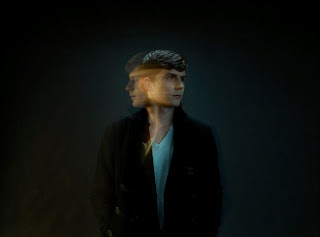INTRO
Travis Shinn's work first caught my eyes in an issue of Guitar World Magazine. He has done many shoots with a lot of famous musicians, and his work has appeared in numerous music magazines like Scratch, Rolling Stones, but does he most of his work for Revolver and Guitar World.
CAPTURING PERSONALITY
What makes his photographs meaningful is his ability to bring out the personality of the person or group he is shooting. He does this very well despite the difficulty of doing so without the use of words or movement. What I've noticed is that in a lot of his photos, although they are posed, they feel natural and never out of character. Either he knows his subjects well enough to set up what he feels is the perfect shoot or he just allows them to be more of themselves during the shoot, or perhaps a combination of the two, whatever his method, it works well and the end result is stunning.
PLAIN BACKGROUND PORTRAITS
Quite a few of his photos are simple plain or white backgrounds which would mean that he needs to rely on other aspects of photography like lighting and color as well a poses of the subjects to create a nice image.
For example the ones below:
As you can see even without a backdrop to help tell a story or help draw the eye, Travis does a good job keeping the viewer interested and understanding his point. To get more in depth, a good example is his photo of guitarist Slash, now the background isn't white like the above but its still pretty plain .
Its a simple pose nothing flashy, just Slash standing there with a guitar in his hands, yet it's still interesting. For one the setting is odd its just an empty room made of woodchip walls, and since it's empty the man focus is still Slash. What makes this photo though, is the lighting which is possibly why this location was used. It's a one directional light pointed at Slash, but small enclosed area helps bounce the light around creating a nice effect, and resulting in a nice image.
THEME PHOTOSHOOTS
Now I'm not very familiar with the musicians above but after seeing these images I get a sense of their personality and style of music.
SCENERY
A lot of his other work non-musician related material is also worth a look. They say every picture tells a story and that seems to be the case here as well. Whether it's photo with people or just of the scenery.
The images above are all monochrome and implies a more sad tone combine that with the theme of loneliness, (the single house in the woods, the lone chair at the beach, the one tree by the side of the road and the single stream in the field) and you get a sense of a story. Change one thing as little as the colour and the whole story can change too, so Travis does a good job of tying all his elements together to express his vision.
CONCLUSION
Overall Travis Shins work's are very well done. He knows well enough what he wants to represent and express in an image, how to create it and then capture his vision and share it with others. From the first time I saw some of his work till now I'm still a fan.
Here are some more of his work:
Here are some more of his work:













































